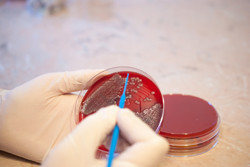Understanding bacterial virulence
Clostridium difficile causes infectious diarrhoea. Severe CDI outbreaks have been reported over the past decade as hospitals seem to facilitate the selection and spread of virulent forms of C. difficile. Scientists on the EU-funded CDI project set out to investigate various aspects of Clostridium strains and their adaptation processes. To differentiate between hyper-virulent and epidemic strains, they mapped genetic differences to find genes implicated in bacterial virulence. Hyper-virulent strains possess a different glycosylation pattern on their flagella, a lash-like structure used by bacteria for locomotion. Characterisation of the genes responsible for this novelty could unveil important bacterial targets that could also be exploited for therapeutic interventions. Interestingly, epidemiologic studies showed that C. difficile is continuing to evolve in concert with human activity. Means to control bacterial spread and transmission are rather inefficient possibly due to antimicrobial resistance. Scientists tested the effect of various disinfectants on strains having different degrees of virulence to elucidate the mechanism of CDI. Only one oxidising agent was efficient at eradicating all bacterial strains, indicating that care should be taken when choosing antimicrobial agents against C. difficile. Another potential explanation for the persistence of C. difficile is the formation of biofilm bacterial communities on various hospital surfaces or devices. Project members identified a spore-forming protein with a key role in biofilm formation that could also serve as a future drug target. Overall, the CDI study provided significant knowledge on key attributes of C. difficile hyper-virulent strains and underscored the importance of investigating the causes behind their emergence. The identified molecules could prove useful in effective drug design for potent anti-bacterial action even against resistant strains.







